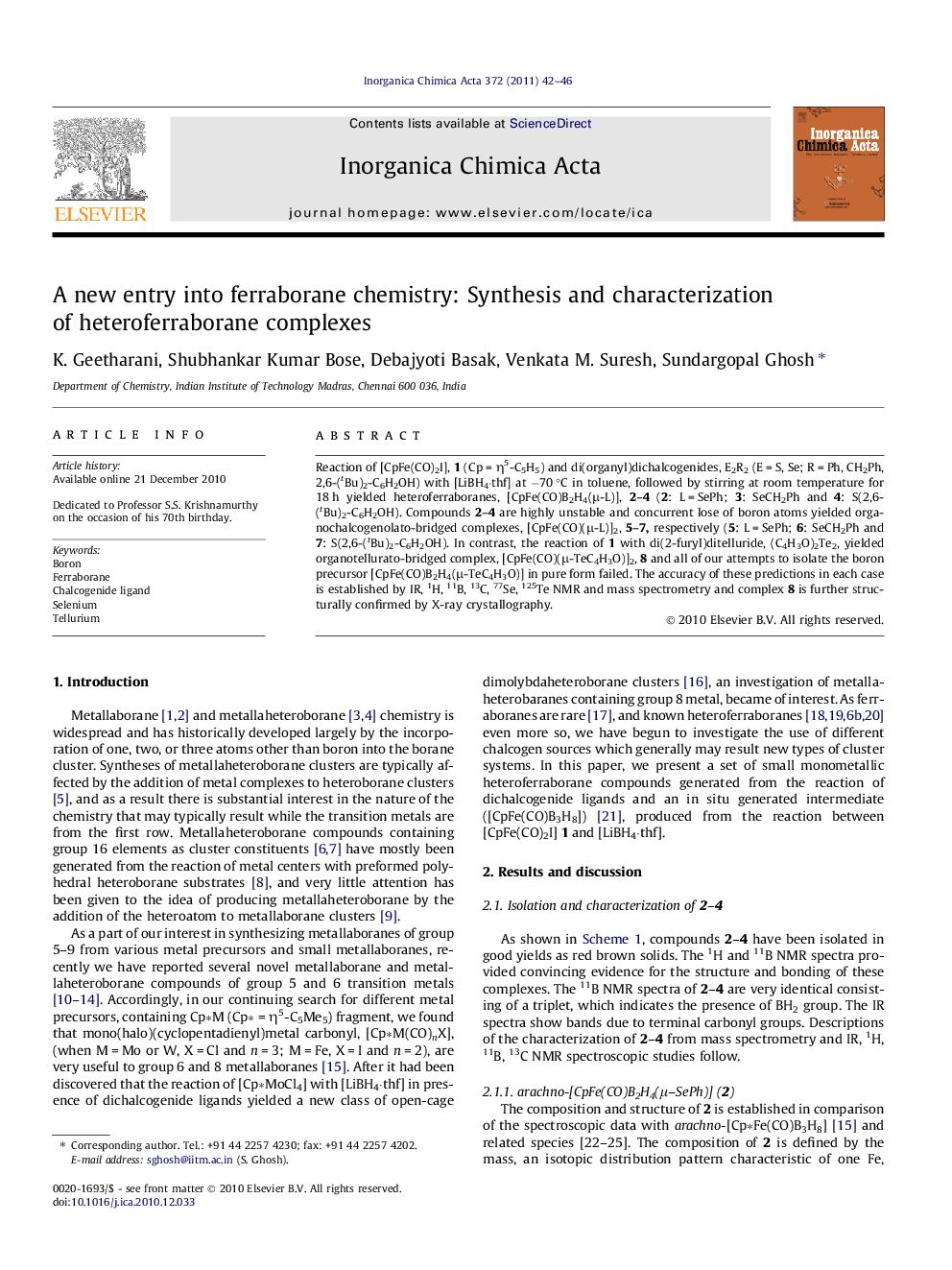| Article ID | Journal | Published Year | Pages | File Type |
|---|---|---|---|---|
| 1308870 | Inorganica Chimica Acta | 2011 | 5 Pages |
Reaction of [CpFe(CO)2I], 1 (Cp = η5-C5H5) and di(organyl)dichalcogenides, E2R2 (E = S, Se; R = Ph, CH2Ph, 2,6-(tBu)2-C6H2OH) with [LiBH4·thf] at −70 °C in toluene, followed by stirring at room temperature for 18 h yielded heteroferraboranes, [CpFe(CO)B2H4(μ-L)], 2–4 (2: L = SePh; 3: SeCH2Ph and 4: S(2,6-(tBu)2-C6H2OH). Compounds 2–4 are highly unstable and concurrent lose of boron atoms yielded organochalcogenolato-bridged complexes, [CpFe(CO)(μ-L)]2, 5–7, respectively (5: L = SePh; 6: SeCH2Ph and 7: S(2,6-(tBu)2-C6H2OH). In contrast, the reaction of 1 with di(2-furyl)ditelluride, (C4H3O)2Te2, yielded organotellurato-bridged complex, [CpFe(CO)(μ-TeC4H3O)]2, 8 and all of our attempts to isolate the boron precursor [CpFe(CO)B2H4(μ-TeC4H3O)] in pure form failed. The accuracy of these predictions in each case is established by IR, 1H, 11B, 13C, 77Se, 125Te NMR and mass spectrometry and complex 8 is further structurally confirmed by X-ray crystallography.
Graphical abstractReaction of [CpFe(CO)2I] (Cp = η5-C5H5), and E2R2 (E = S, Se; R = Ph, CH2Ph, 2,6-(tBu)2-C6H2OH) with [LiBH4·thf] at −70 °C yielded novel heteroferraboranes, [CpFe(CO)B2H4(μ-L)] (L = SePh, SeCH2Ph and S(2,6-(tBu)2-C6H2OH)). These heteroferraboranes are highly unstable and concurrent lose of boron atoms yielded organochalcogenolato-bridged complexes, [CpFe(CO)(μ-L)]2.Figure optionsDownload full-size imageDownload as PowerPoint slideResearch highlights► Efficient, high yield syntheses of novel heteroferraboranes have been described. ► Decomposition of heteroferraboranes gives organochalcogenolato-bridged complexes. ► Results highlight the possibility to synthesis a new class of metallaheteroboranes.
